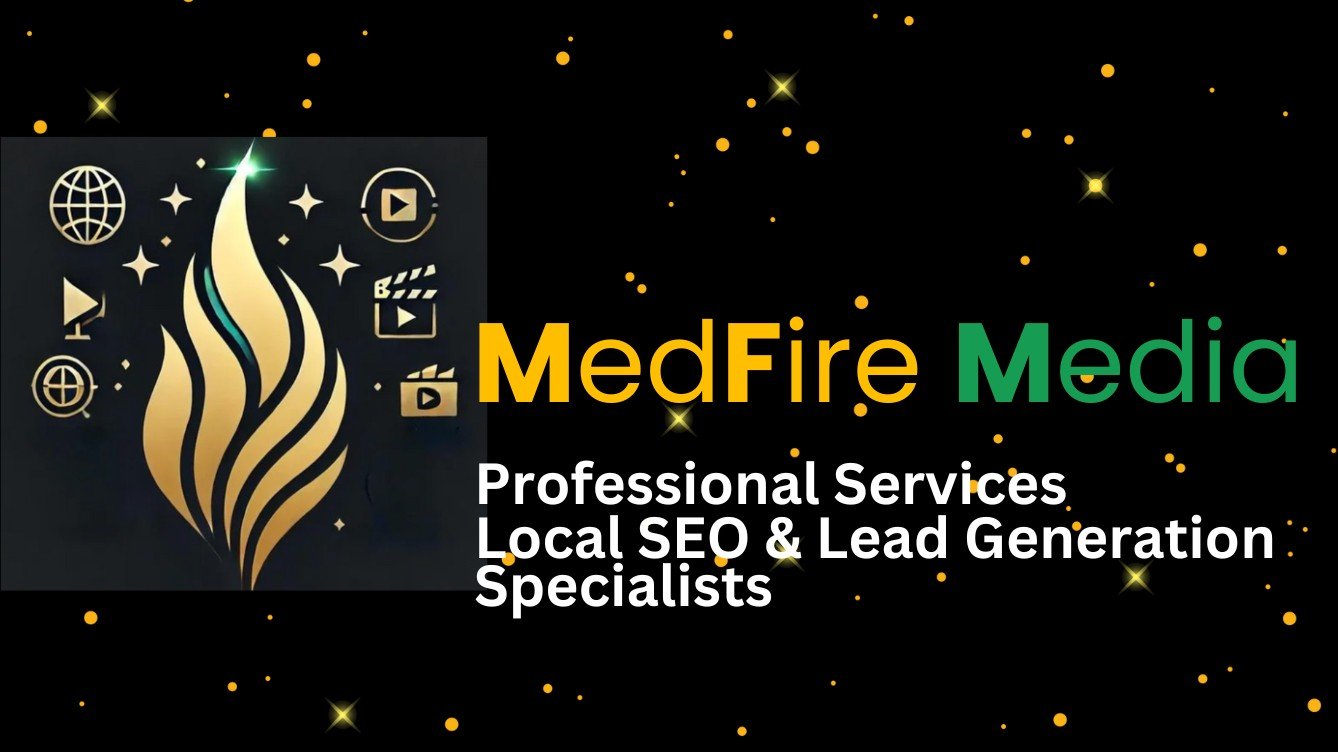Key Takeaways
- Generative Engine Optimisation (GEO) helps plastic surgeons create targeted content that aligns with search algorithms and patient needs, increasing visibility and engagement.
- Different social media platforms serve distinct demographic groups—Instagram, Snapchat, and TikTok reach younger patients (17-35), while Facebook and YouTube are more effective for older demographics (36-70+).
- Patients strongly prefer aesthetic content over scientific content, with before-and-after galleries and procedure explanations driving the highest engagement.
- Up to 40% of plastic surgery patients are influenced by social media when selecting their surgeon, making a strategic content marketing approach essential.
- Content that addresses specific procedure questions and recovery expectations significantly increases patient trust and conversion rates.
In today’s digital-first environment, plastic surgeons can’t rely solely on word-of-mouth and glossy before-and-after photos. Content marketing has become one of the most powerful tools for attracting, educating, and converting prospective patients. By delivering trustworthy, targeted information across digital channels, plastic surgeons can build credibility, rank in search engines, and guide patients through what is often a highly personal and lengthy decision-making process. explores how plastic surgeons can use content to connect with modern patients at every stage of their journey.
The Shift to Generative Engine Optimisation (GEO)
Generative Engine Optimisation is the evolution of SEO in the age of AI and chat-based search. With platforms like ChatGPT influencing patient decision-making, plastic surgeons must now create content that not only ranks on Google but also provides clear, authoritative answers that these new engines can draw from. This means your content needs to anticipate and respond to highly specific questions in natural language.
Why It Matters: Patients aren’t just Googling “best rhinoplasty near me.” They’re asking AI, “What’s the safest nose job technique for Asian patients with thick skin?” These are long-tail, high-intent queries that require thoughtful, detailed answers. If your content doesn’t address those nuanced queries, you’re invisible.
How to Win: Structure your content with clear questions and direct, evidence-based answers. This isn’t about stuffing keywords—it’s about anticipating the language and logic behind real patient concerns. Include patient-specific terms, procedural variations, and regional references to increase your content’s relevance. Also, implement schema markup and use structured FAQs to ensure your content is crawlable by both traditional search engines and AI-driven platforms.
Know Your Audience (and Their Search Habits)
Plastic surgery patients are not a monolith. Each demographic—be it young adults researching preventative Botox, or moms considering a tummy tuck—has different motivations, fears, and decision timelines. Successful content marketing begins with audience understanding. What motivates a 23-year-old exploring non-surgical lip enhancements is vastly different from a 40-year-old mother seeking a full body makeover after childbirth.
Key Personas to Consider: Millennials and Gen Z are digital natives who value authenticity. They often discover procedures through social platforms like TikTok or YouTube and trust peer-created content. Your blog posts should explain procedures clearly and transparently, using everyday language and visuals. Moms in their 30s and 40s are often balancing multiple priorities and want trusted, expert guidance. They respond well to detailed educational content that explains procedures, risks, and outcomes. Male patients, a growing segment in aesthetics, tend to prefer a more discreet and data-driven approach. They want to see tangible results, scientific backing, and testimonials from people like them.
Create Content for Every Stage of the Patient Journey
Every plastic surgery patient goes through a psychological and informational journey before booking a consultation. Your job is to guide them with the right content at each stage.
Awareness Stage: At this point, prospective patients may not even be sure if a procedure is right for them. They’re browsing, asking basic questions, and looking for credible information. This is where educational blog posts, short videos explaining terminology, and downloadable guides can shine. Articles like “What is a mini facelift?” or “How to choose a board-certified plastic surgeon” provide value without pushing a sale.
Consideration Stage: Now the patient is comparing procedures, options, and providers. They might be weighing “Mini facelift vs. full facelift – which is right for me?” or searching for detailed recovery timelines. Your content here should include visual aids, side-by-side comparisons, FAQ sections, and even self-assessment quizzes to help them navigate choices. Use this stage to build authority.
Decision Stage: The patient is nearly ready to book but needs reassurance. They want to know about costs, see patient stories, and feel confident about their choice. Your site should prominently display testimonials, before-and-after photo galleries, detailed procedure pages, and financing options. Location-specific pages (e.g., “Best liposuction in Beverly Hills”) also help capture local traffic and increase conversions.
Build Trust with Digital Proof
Cosmetic procedures are deeply personal, and trust is everything. People want to know that you not only have the technical skills but also understand and care about their individual concerns.
1. Reviews & Testimonials: Build a strong presence on platforms like Google, RealSelf, and Yelp. Actively request reviews from happy patients and feature them throughout your website. Authentic video testimonials are particularly powerful—they humanize your brand and build instant rapport.
2. Case Studies & Before/After Galleries: Don’t just post random images. Categorize them by procedure, age range, gender, and ethnicity. Add context to each image: what concerns the patient had, what was done, and what the results looked like over time. Interactive sliders and annotations can also boost engagement.
3. Credentials & Certifications: Patients want reassurance. Clearly present your board certifications, medical affiliations, awards, and training background. Dedicate a section to your surgeon’s story, experience, and philosophy. Include press mentions, podcast interviews, or media features when available.
Optimise Your Website for Conversion
Your website is more than a digital brochure—it’s your most important conversion tool. It must be fast, intuitive, and mobile-optimised.
Key Elements: A clean layout, mobile responsiveness, and fast loading times are musts. Each procedure should have its own page, with visuals, testimonials, and CTAs (“Schedule a Consultation”) clearly visible. Live chat and sticky headers with contact options can help visitors take action without friction.
Speed + Simplicity = More Bookings Research shows that sites that load in under three seconds drastically outperform slower sites in conversion rates. Compress images, use lightweight code, and host on reliable servers. Don’t overload your homepage—make it easy for users to find what they’re looking for in three clicks or less.
Create Smart Content Assets
Your content strategy shouldn’t end with blogs. Diversify your content formats to reach patients where they are.
Educational Blogs: Regularly updated blogs improve your SEO and establish your authority. Tackle real patient concerns with authenticity. Topics like “5 Things No One Tells You About Breast Lift Recovery” or “How to Prep for a Consultation” are evergreen and high-performing.
Lead Magnets: Offer downloadable resources in exchange for email addresses. An “Ultimate Guide to Mommy Makeovers in SoCal” or an “Am I a Good Candidate?” checklist gives value while helping you grow your list.
Video Content: Videos are ideal for building trust. Record short clips answering FAQs, show behind-the-scenes of your office, and walk patients through recovery expectations. You can also film educational walkthroughs of procedures using animation or surgeon narration.
Social Content: Your Instagram, TikTok, or YouTube presence can make or break first impressions. Post behind-the-scenes content, highlight your team, and myth-bust common misconceptions (“Botox freezes your face – True or False?”). Keep it real, educational, and engaging.
Use Email to Stay Top-of-Mind
Many patients wait weeks or even months before committing to a procedure. A strong email strategy keeps your practice top-of-mind throughout that decision window.
Segmented Campaigns: Personalise your email flows. New subscribers should receive an introductory educational series. Those showing interest in a specific procedure can receive targeted content including recovery tips, cost explanations, and patient stories. Post-consultation flows should include reassurance, additional FAQs, and an easy way to ask follow-up questions.
Bonus Tips: Use seasonal content to promote relevant procedures (e.g., laser treatments in winter, body contouring in spring). Send invites to webinars, open house events, or VIP patient nights.
Measure What Matters
You can’t improve what you don’t track. Use tools like Google Analytics, Hotjar, and your CRM to monitor how people interact with your content.
Track metrics like:
- Page visits and bounce rates
- Scroll depth and time on page
- Form completions and consultation bookings
- Email open and click-through rates
- Traffic sources (organic, referral, paid)
Use these insights to double down on what’s working and refine what isn’t.
Track Attribution with CRM Integration
To truly understand your ROI, connect your content efforts to business outcomes. Platforms like HubSpot, Pipedrive, or Aesthetic Record can help you see which piece of content influenced a consultation. UTM tags, conversion paths, and campaign reports all help measure what content is converting—and what’s not.
Imagine discovering that your “Breast Augmentation vs. Lift” article is responsible for $50,000 in new consults. That’s data you can build a strategy around.
Your 12-Month Content Plan
Quarter 1: Audit and refresh your website. Launch four cornerstone blog posts—these are your heavy-hitters for SEO. Create one powerful downloadable asset.
Quarter 2: Set up email automation and segment your contact list. Film several short-form videos and begin a regular publishing rhythm. Launch an Instagram Reels content series featuring bite-sized procedure education.
Quarter 3: Publish real patient case studies and testimonials. Update your before/after gallery with interactive sliders. Run a local SEO campaign and create city- or neighborhood-specific landing pages.
Quarter 4: Host a patient appreciation event or limited-time offer. Launch an interactive quiz on your site to boost engagement. Review your analytics and identify your best-performing content to inform your strategy for the next year.
Final Thought
In aesthetics, trust is everything. Great content doesn’t just rank—it reassures, educates, and motivates. When your blog answers a nervous patient’s late-night question, when your video shows someone who looks like them smiling post-op, you’re not just marketing. You’re building relationships. And relationships turn into patients.
can help plastic surgeons like yourself implement effective content marketing strategies that attract ideal patients and build thriving practices through personalised, data-driven approaches to digital content.
{video_pr:link}


Comments are closed.